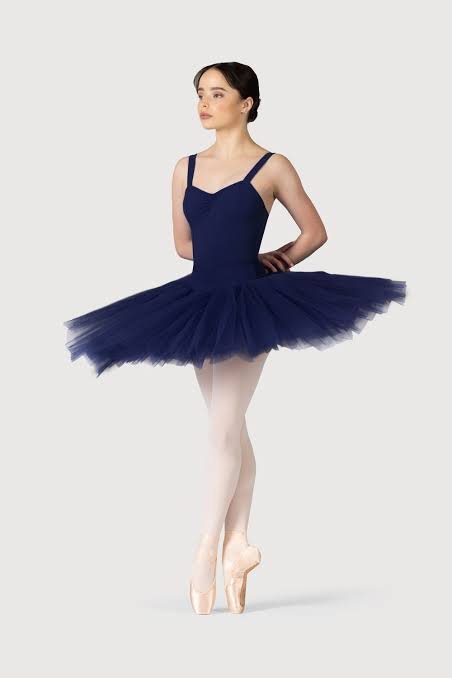
The ballet tutu is one of the most iconic elements of classical ballet attire, with a history that is as layered as the garment itself. First emerging in the 19th century, tutus were originally designed to complement evolving ballet styles and showcase dancers’ technical skills, which became more complex and refined over time.
Origins and Evolution of the Tutu
The tutu evolved from the skirts worn by early ballet dancers, which were long and flowing to emphasize the Romantic style’s ethereal themes. By the 1830s, Marie Taglioni, a celebrated ballerina, popularized a shorter, lighter skirt that allowed more movement and emphasized footwork. This design marked the beginnings of what we now recognize as the Romantic tutu, which typically extends down to mid-calf.
As ballet grew more technically demanding, costumes continued to shorten. By the 1880s, the tutu had transitioned to what is now known as the classical style—a short, stiff skirt that extends horizontally from the dancer’s hips. This design, seen in ballets like Swan Lake and The Nutcracker, allowed the audience an unobstructed view of the dancer’s precise movements. Today’s classical tutus have up to 13 layers of tulle to create a structured, flat shape.
Types of Tutus
There are several main types of tutus, each serving a different aesthetic and functional purpose:
Romantic Tutus: Long and flowing, reaching below the knee, it creates a dreamy silhouette, ideal for ballets with romantic or supernatural themes, like Giselle.
Classical Tutus: Short and stiff, often associated with traditional ballet performances. It includes a “pancake” style, which extends horizontally, and a “bell” style, which has a softer, rounded shape.
Powder-puff Tutus: Popularized in the mid-20th century, this style is even shorter and rounder, showcasing more of the dancer’s legs, and was a favorite of choreographers like George Balanchine.
The Tutu in Modern Ballet
In contemporary ballet, designers have experimented with alternative materials and forms, introducing tutus made of unconventional materials to suit the choreography’s unique demands. Some modern pieces feature tutus in shapes or styles that defy the traditional silhouette, symbolizing the genre’s evolution and willingness to challenge norms..
How to Choose the Right Tutus Cloth for Your Needs
Choosing the right tutu cloth depends on the intended use and desired look. Here are a few tips to help you decide:
Purpose: Consider the primary use. For ballet, go for stiffer tulle; for children’s skirts, softer varieties work best. If you’re aiming for decorative or craft uses, organza or nylon netting could offer the structure you need.
Stiffness : The level of stiffness varies widely in tutu cloths. Stiff fabrics create a classical look, while soft fabrics offer a flowy aesthetic.
Color : Tutu cloth is available in countless colors. Consider color options if you need to match a particular theme or costume.
Durability : If you need the tutu cloth for a long-lasting project, go with durable fabrics like nylon or polyester tulle, which are less prone to tearing.
Texture : Some tutu cloths have a scratchy feel, while others are smooth. For clothing, especially children’s wear, soft textures are preferable.
Uses of Tutus Cloth Beyond Ballet
While ballet is the most well-known use for tutu cloth, this versatile fabric has expanded into various fields. Here are some popular applications:
Children’s Fashion
Tutu-inspired skirts and dresses are common in children’s clothing, often designed with soft tulle for comfort.
Costumes and Cosplay
Tutu cloth is used extensively in costume design, from Halloween outfits to elaborate cosplay costumes. Its lightweight and voluminous nature make it perfect for adding dramatic flair.
Event Decor
Tulle and other tutu cloths are widely used for wedding and event decor, such as chair sashes, table skirts, and venue drapery.
Crafts and DIY Projects
Crafters use tutu cloth in wreaths, gift wrapping, and various DIY projects. Tulle, in particular, is a favorite due to its wide color range and easy-to-use nature.
FAQs
Why is it called a “tutu”?
The name “tutu” likely originated from the French word cucu, meaning “bottom.” This nickname is believed to reference the garment’s flared shape and the exposure of dancers’ legs and feet, which were highlighted by the shorter skirt style.
What is a tutu made of?
Most tutus are crafted from layers of tulle, which provides volume and structure without excessive weight. Tulle allows for the stiff and structured shape of classical tutus while being light enough for dancers to move freely.
How long does it take to make a tutu?
Creating a tutu is a meticulous process, often taking upwards of 40 hours for a single piece. Each layer of tulle is individually sewn, and the base is reinforced to ensure the tutu holds its shape during performances
What are the most famous ballets featuring tutus?
Some of the most renowned ballets showcasing tutus include Swan Lake, The Nutcracker, and Giselle. Each of these works highlights the tutu’s role in portraying both elegance and technical prowess.
How much does a professional tutus cost?
A custom-made professional tutu can range from several hundred to thousands of dollars, depending on materials, craftsmanship, and detail. Hand-made tutus for professional companies often use the finest materials and meticulous construction methods.
In summary
The tutu remains a symbol of ballet’s beauty, grace, and technical demands. From its origins as a modest skirt in the Romantic era to the elaborate designs seen in contemporary ballet, the tutu has evolved to showcase both the art and athleticism of dance. Its timeless design continues to inspire both classical and modern choreography, reflecting the tradition and innovation that defines ballet.
To read more, Click here
Leave a Reply